
Stefan a Wengen
“This is not death, it is a fruit stand…”
Lorca (Poet in New York, Bly tr.)
“For Lorca, the vital impulse driving genuine and authentic creativity is Death (itself); for him, the duende is an embodiment or specter of Death as a living, breathing, dark or extreme exaggeration of Henri Bergson’s élan vital..”
José Rodeiro
“The *economic*, in the form of this most rudimentary and most brutal necessity, thus offers itself as a prosthesis for political stability, a winning substitute for the violence of the Prince, which may induce fear with its tens of millions of swords but sooner or later ends up exciting hatred…”
Gilles Chatelet
“We went into the Vietnam War and did all that … killing and we now refuse to go through the … grief.”
Robert Bly (interview with Ekbert Faas)
I was thinking of the inability of Western culture to collectively address grief. The Orlando shooting was a complex narrative, first in terms of the American born shooter (or one of them depending on who you believe) and his crack pot anti communist homophobic father and the eerie echoes of the Boston Marathon bombing. And the always unsettling knowledge that you aren’t being told the truth. Or perhaps not even close to the truth. There is a strange surreality to recent *terror* attacks (Sandy Hook is another and Paris) because somehow the news images sanitize the death.
But also in the predictable banality of liberal cries for gun control and the equally predictable state response, labeling it *terrorism* and then the opportunistic political rhetoric of Trump and Clinton. But the collective response, the public rituals felt, as they usually do, trivial and manipulative, and empty. Now, the questions about G4, the security firm Mateen once worked for, were mostly buried (G4, among other things, is used in the torture of Palestinians in Israeli jails) as were the curious contacts between Mateen and the FBI and local police.
Then there is the purely psychoanalytic aspect. Mateen went to gay clubs and we doubt for reconnaissance purposes. He worshiped authority and idealized the NYPD. He was the no-doubt sexually confused son of a what appears to be a repressive and irrational father and he found outlets for his urges in idealized male rituals of militarism.
It’s odd to look at Mateen as the de-ritualized Mishima, a young man besotted with ideal male images, but without any aesthetic rituals, or in fact living in a mostly denuded and hideously ugly city, Orlando, who found no refuge for his torments. No Golden Pavillion for Mateen. And in a sense Mateen’s case is linked to other patsy cases, the police aparatus needs such cases to appear active and control perception. Nobody ever looked at Mateen twice, I suspect; an unpleasant and boorish young man, the product of his unpleasant and boorish father. He was like tens of thousands of adrift young males in the U.S., living in the cultural deserts of small city America and its suburbs. And in that sense he IS the kind of raw material the FBI looks at for sting operations.

Gio Anselmo
Orlando, once the Seminoles were killed or driven out, was built on Cotton farming and cattle ranching. But in the 1880s citrus was planted and the city grew exponentially. In 1894 though a freak three day freeze wiped out the entire citrus crop and with it most of the infrastructure for that industry. The economic devastation cast a long shadow over Orlando for decades. Maybe forever. It was a city tagged with a hard luck jacket. The city grew again in the 1930s, but it was post WW2 that modern Orlando took its current form. The forerunner of Lockheed Marietta centered its business there, and become the largest employer in the region. And it was in the late fifties that Walt Disney decided to open Disneyworld — or *the Florida Project* as he called it, and with the planned Epcot Center, immediately after. Disney died in 1966 so the bizarre and hyper creepy vision of Epcot never was realized. But ideologically the marriage of Disney and Defense was the cornerstone of Orlando cultural history. The recuperation of a swamp.
Today Orlando is built around franchise restaurants, Nikelodeon studios, and Disneyworld. It is hot a sticky in the summer, and has required megatons of insecticide to keep the various bugs away from the tourists. And central Florida has also been a repository of racial violence since the 19th century.
As Yuri Gama writes..
“Similar to rest of the South, Florida developed an aggressive pattern of racial violence and disenfranchisement. Historian Irvin Winsboro writes that between 1880 and 1930 white mobs lynched 3,220 blacks in the South. At odds with the common perception that Florida has always been a moderate region in the South, during these 50 years the Sunshine state maintained one of the highest per capita rates of extralegal deaths.”
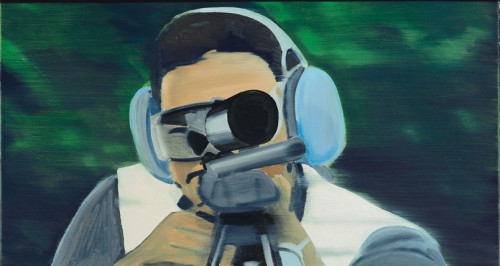
Eberhard Havekost
Later, the planning of and construction of major highways further segregated the black communities from downtown Orlando. A practice carried out all over the south, and perhaps even more in the far West.
Gama, writing on the black neighborhood of Parremore, in Orlando:
“Until 1980, Parramore’s history appeared as one blatant case in which the process of suburbanization contributed to the reinforcement of racial segregation and the impoverishment of black neighborhoods reproduced in many other communities throughout the United States. The main factors that led to Parramore’s decay were the historic disenfranchisement of African Americans, the use of physical violence through lynchings, massacres and bombings, and the community’s powerlessness in fighting the disruption and social segregation imposed by the construction of the I-4 and public housing since the 1950s.”
There has always been a distinctly reactionary vibe to central Flordia, well, to all of Florida save Miami and the Keys. Its the home of the Kennedy Space Center, and land developers included Rockefellers and Howard Hughes, Disney, and Lockheed. Against this landscape and history Orlando feels much like other U.S. overdeveloped burbs — pretending to be cities (Phoenix is one, and most of Orange Country California, and in a way Dallas as well). It has no indigenous culture, no links to the past. So Omar Mateen, perhaps bi-polar, and at the least a self loathing and deeply angry young man, looks to steriods and body building, is employed in security, and is generally abusive to those close to him. Although precious few people were close to him. In other words Mateen is really a lot like thousands upon thousands of other young American men. He has no politics, he has only anger. Those young men who express such hatred of women at Trump rallies are not greatly unlike Omar Mateen, that’s the irony of the Trump race baiting. And as a side note, it is becoming increasingly clear the major engine of Trump o mania is misogyny. Yes the racism is stark and the homophobia obvious, but those men, mostly (almost entirely) white are there to express their deep roiling all encompassing hatred of women.
And immediately after the attack Clinton and Trump bellow for more police and more surveillance, more intelligence. Immediate. And so grief is subsumed in demand for MORE punishment. The use of the word *intelligence* always strikes me as almost Swifitian.
The U.S. culture is hyper violent. And entertainment is violent, but its important to know what sort of representations of violence we are talking about. And in fact I think this is something often elided in discussions of culture and violence. Its the Tipper Gore phenomenon. There is an argument that all great art is ultimately about mortality in some sense. And I was thinking this week a lot about poetry. And in turn about the great Spanish (or Spanish language) poets such as Lorca, Neruda, and Vallejo. And about Robert Bly, the American poet who served as my introduction to Lorca and Jimenez and Neruda. To all of them. Blas de Otero and Vallejo and Machado. And Bly looms very large now as I recall his fervent anti war protesting and his great political poems.
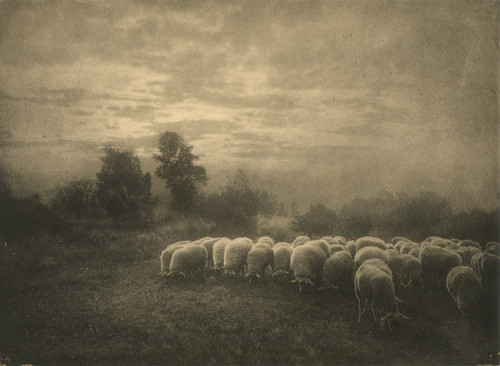
Leonard Misonne, photography. (1920s).
And I think partly that the banality of the generalized public response has to do with the sense of ‘understood’ dishonesty in the official version. The police narrative is disseminated repeatedly, and this constant retelling of events — mostly by mainstream news, but then later in social media — has a coercive effect. It is a set of instructions about how to feel. People turn to the accepted and pre-vetted empty rituals of candlelight vigils and the privileged white class invokes guilt and brings out another cliched narrative of gun control. For there seems to be no other response that has this official imprimatur. *Gun control* is the mantra of white liberal America. And part of the effect of this mantra is to sanitize the narrative. Official talking heads at major corporate news outlets get teary eyed (Anderson Cooper) and *emotional* speaking of the victims. Except these victims are invisible most of the time. Much of the gay community falls in line with this. An exaggerated sense of outrage takes over. Victimage is made special and unique.
(and it is worth noting the long history of attacks against queer and trans people in Florida https://tropicsofmeta.wordpress.com/2016/06/14/queer-florida-reflecting-on-reaction-and-history-in-the-lgbtq-south/).
But all of it, including the additional tacit racism of calling this a *terrorist* attack, is calculated. The state and the police and the organs of official conscience (New York Times et al) are there to shape both the narrative and to stunt the emotions. There is a quick public lynch mob effect for anyone suggesting a counter narrative. Some eye-witnesses claim to have seen multiple shooters, and even to have heard them talking to each other. It’s very difficult to get any sort of reliable read on such incidents. The police seem to always know these guys so I’m not sure what more *intel* would do.
But what interests me here is the psychic malnutrition of contemporary society, and that means in this case the U.S. And I was thinking of Lorca during this for some reason. Lorca’s elemental and famous essay Theory and Play of the Duende seems suddenly important. For Lorca, like Vallejo and other Spanish language poets, was, on some level, a mystic. They were inheritors of Goya and Velasquez. And in the case of Lorca, perhaps most of all, he was an inheritor of Gypsy culture and belief.

Lars Tunbjork, photography. (Office, Berlin).
“They were humanists who lived north of the Alps, Germans steeped in a tradition for which Dionysus had no meaning as a theme until the second half of the 19th century. Moreover, when historical necessity forced them to study it, they did so with the very tools provided by the history of humanistic studies in which they were trained. By this I mean the historical, racial and
geographical considerations which today we call Transalpine psychology, though they themselves were not aware that this was the psychic background of their own studies. They were the children and grandchildren of a Protestantism imbued with fantasies of imperialistic dominion which distanced them from positions more favorable to the personal inner experience of what they were studying. Euphoric and steeped in an incurable optimism, they began to explore the irrational from the incubator of Nazi shame, from that other (Wotanic) madness which bore no relation to the one they were studying.”
Raphael López-Pedraza
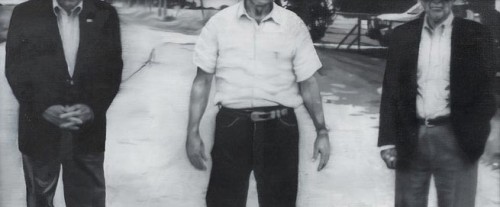
Johannes Kahrs
When Lopez-Pedraza writes the above paragraph he is discussing the Protestant neo Nietszchen sensibility that was one triubtary of Nazi mythology. And it is related closely to the suffocating Catholicism of Heidegger. For Lorca, Duende was one among a number of elements that made up the creative mimetic process. And his citing of Euripides, and The Bacchae, written when Euripides was in his eighties, and living in exile, is partly to expose the proximity of death to the creative. The Duende creative. It is revealed most clearly in old age.
“Today death is in the hands of medical technology and we know that technological titanism does not recognize death. The memory of
death in the soul is absent. Thus, it seems as if the image of the, agony cannot even be conceived of now and is therefore no longer respected.”
Raphael López-Pedraza

Lorca and Dali, 1927.
The U.S. denial of the suffering caused by its imperialist wars is huge. It is a monumental denial. And to facilitate such denial requires an enormous effort. And this touches on the general wholesale madness of our age. The effect and cause can get confused, but one clear effect is to render much of the population incapable of processing basic stories. Kenneth Burke is today hugely unfashionable, and yet when I return to Burke, or William Empson, or even Frank Kermode, I find a lucidity that is today extinct. And that lucidness is intertwined with a possession of earlier non-instrumental intuitive recognitions. And what props up such coherence and limpid prose is an erudition that is also, mostly, extinct.
Burke, writing on O’Neil’s Mourning Becomes Electra:
“We end here on the motif of the shut-in personality, quite iiterally
objectified. And the closing, novelistic stage-directions ur beautifuUy
suited to our purpose; for note how, once the shutters have been closed,
thereby placing before our eyes the scenic replica of Lavinia’s mental
state, this scene in turn becomes the motivation of her next act. For
we are told that she walks like an automaton in response to the closing
of the shutter, “as if this were a word of command.”

Didier Vermeiren
Such writing is very rare today, if not non-existent. But it is relevant to see a short few paragraphs later that Burke notes an emerging language of clerical stasis.
“Profession,vocation, policy, strategy, tactics are al1 concepts of action, as are any
words for specific vocations. Our words “position,” “occupation,” and
“office” indicate the scenic overtones in action. Our words for particular
“jobs” under capitalist industrialism refer to acts, but often the element
of action is reduced to a minimum and the element of sheer motion
raised to a maximum. (We here have in mind not only certain
near-automatic tasks performed to the timing of the conveyor belt, but
also many of the purely clerical operations, filing, bookkeeping, recording,
accounting, and the like, necessary to the present state o£ technology.”

Andrej Dubravsky
The erosion of language to communicate ideas serves the machinery of propaganda quite well. And events such as the Orlando shooting, whatever the real story, becomes these strange empty public rituals. There is no vocabulary for real grief. Obama can speak at Hiroshima and I am sure nobody can recall what he said even ten minutes after he said it. The radical vision of a Lorca is important, not because of his overt politics, but because of a sensibility that was outside convention. And Lorca was perceived as dangerous and eventually executed by firing squad in 1936. The execution was ordered by Franco’s government, and Lorca was only one among hundreds of leftists and anarchists murdered that year. For Lorca was by virtue of his sensibility, never going to accommodate the system, as Dali did. But as Rodeiro says, Dali lacked Duende. In 1937 the anti marijuana law was passed in the U.S. The Hearst media empire paved the way by associating weed with Jazz and negros and unwholesome sexual activity. Gilles Chatelet points out that this was only one year after the ‘engineers of consent’, with the American Public Relations, finalized a lot of their theoretical work. The banalizing of daily life was beginning to be institutionalized. Later, four out of five Americans approved of the loyalty oaths of McCarthy, and with the imposition of urine tests for drugs. Homosexuality and drug use have shared certain relationships with the state.
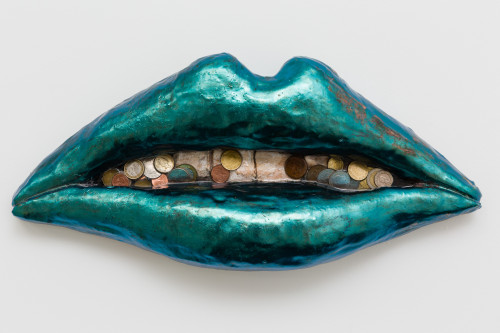
Liz Craft
By 1941 the Duende essay had begun to circulate among artists in New York, most prominently Robert Motherwell. For Abstract Expressionism was always the work of radical sensibilities, and it is exactly for this reason that the CIA looked to co-opt the movement. No point in trying to co-opt landscape painters. The point here is that Duende, as an idea, is steeped in a transgressive body, and sexuality. Lopez-Pedraza writes….“Archetypally, Dionysus will always be the persecuted and dismembered deity, the most repressed of all the god(Euripides says that he was even repressed in Thebes, the mythical birthplace of his mother)…”. It was in the 1933 that Reich wrote The Mass Psychology of Fascism, and also began to place emphasis on the character armoring of the body. Three years later Franco had Lorca murdered. And that allegory of Lorca’s life includes the accommodation to power that Dali’s anti allegorical life took. The exile returned to his land was shot by firing squad along with men who had little idea who he was. Franco launched his assault on the left wing government in July and by August Lorca was dead. He was also, for all intents and purposes, openly gay. The violence against the transgressive sexual outlaw has changed very little.

Katherine Kuharic
From Nothing But Death…
“There are cemeteries that are lonely,
graves full of bones that do not make a sound,
the heart moving through a tunnel,
in it darkness, darkness, darkness,
like a shipwreck we die going into ourselves,
as though we were drowning inside our hearts,
as though we lived falling out of the skin into the soul.
And there are corpses,
feet made of cold and sticky clay,
death is inside the bones,
like a barking where there are no dogs,
coming out from bells somewhere, from graves somewhere,
growing in the damp air like tears of rain. “
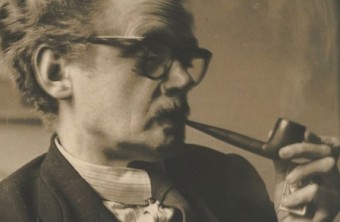
Hugh MacDiarmid
And MacDiarmid, a lifelong member of the Communist Party of Great Britain, was very much at odds with the establishment figures of the Empire. And, writing in Scots dialect relegated MacDiarmid to near obscurity. He lived on a remote Island in Shetland. MacDiarmid was on Orwell’s snitch list of 1949. Orwell had no Duende, MacDiarmid did. And no small credit goes to Bly for making an American literary public aware of the one of the best of 20th century poets. MacDiarmid ran against conservative PM Alec Douglas-Home in Glasgow, in 1941, but received only 127 votes. He was always outside, and his work is infused with that quality of resistance. His was a life of anti-careerism and of genuine idealism.
The incremental disempowering of working class traditions has happened gradually and is often unnoticed until their gone. Today, the very most oppressed classes and minorities are the ones beginning to renew community rituals. And renewing those the establishment doesn’t notice. Partly, and perhaps not that big a part, but still of relevance, has been the destruction of unions. Union culture in the U.S. had some significance although it was already deteriorating by the late 1920s. The final nail in that coffin was Reagan, of course.
“An intimation of the law that governs blind contingency, which Heraclitus called the rule of enantiodromia (conversion into the opposite), now steals upon the modern man through the by-ways of his mind, chilling him with fear and paralysing his faith in the lasting effectiveness of social and political measures in the face of these monstrous forces.”
Carl Jung

Laura Gilpin, photography. (Chichan Itza, Mexico)
I think this is happening this election season. And I think this paralysis, if you will, is also both expressed in the trivializing of culture and the trivial is caused by political coercion. Decades of dishonesty begins to stop psychic functioning. And the overwhelming ugliness of both major candidates is simply too great to effectively repress. Kevin Bushell, in an essay on Bly (and not a good one but a representative one, sadly), quotes his poem “Driving Through Minnesota During the Hanoi Bombings”…
Our own gaiety
Will end up
In Asia, and you will look down in your cup
And see
Black Starfighters.
Our own cities were the ones we wanted to bomb!
And this is true. It is the calculus of depravity. Perhaps an element of this exists for all wars. The failure of liberal America to reject major political machines has a psychological blow back. And it is in understanding the allegories of both society and history, and then of ourselves, that art, poetry, has importance.
“The man in the black coat turns, and goes back down the hill.
No one knows why he came, or why he turned away, and
did not climb the hill.”
Bly is one of the only American poets to ever write truly overtly political poems. Now, when Bly started at Harvard, he was just back from the Navy. In fact there was at Harvard in 1948 an entire group of older veterans in the English department. Bly has spoken of the terror this inspired in the faculty who were not used to men, rather than boys. Men often who had returned from combat. And immediately it strikes me how important it is for the system to keep education tethered to the very young. And, with student loan debt, and a growing sense of desperation for that degree (even if illusory) the control factor instills itself ever more deeply. Of course fewer and fewer students are even studying liberal arts or the classics. Business schools have waiting lists.
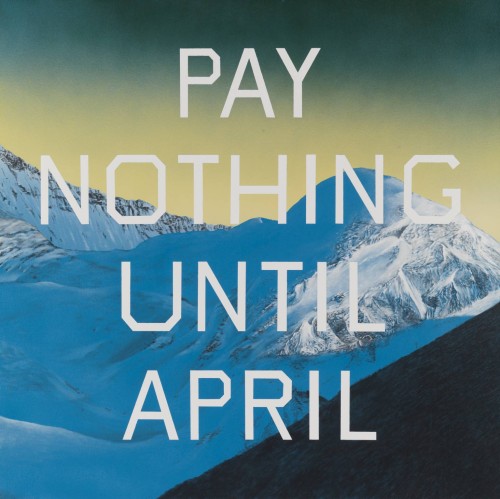
Ed Ruscha
In that long Paris Review interview Bly says….“Most of the English teachers in the universities hated our doing “political poems,” as they were called. That still happens. When I’m at a reception at a university these days, an English professor may come up to me and ask, How do you feel now about those poems you wrote during the war? They want me to disown the poems. I say, I’m sorry I didn’t write more of them.”
Another aspect of this discussion is simply economic. One could, in the later 40s and through the 50s and onto part of the 60s, live very cheaply and make art, and if it didn’t sell, and it usually didn’t, still survive. And not just survive but function as part of an artistic community. Sometimes that was rather formal, but usually this just meant friends and supporters of the arts. And because artists were poor there was a great ingenuity employed to get one’s work out there to be seen or heard or read. And that meant a kind of bohemian culture in many cities. Today, one cannot be the cliche of the *starving artist*. Because the shift has been from the *artist* part to the *starving* part. You cannot live reasonably today on very little money. You are subject to institutional abuse and police harassment and general bureaucratic stigmatizing. And this has happened, largely, in incremental steps and so less noticed. Gradually, though, community has disappeared and artists work more in isolation.

Anne Brigman, photography. 1910.
But there is a larger factor in how culture overall is being shaped today. There are plenty of very good artists working in fine arts and fewer perhaps in the fields of writing, but some still exist. But *art* itself is a subject of scorn. The meme of starving artist is one of ridicule. Hollywood has made the figure of the artist into a joke. It is a staple of comedy film and TV, but also in places like the N.Y. Times, where a certain lip service is paid to the officially sanctioned (and popular) artist but at the same time there is a not too subtle marginalizing of those who are not popular. Artists are either very successful (and much writing is devoted to their finances) or they are losers. The tone is patronizing and condescending. And I think there are a couple of ways this happens. Art is spoken of in the affirmative. It is valued for its affirmations. And such affirmations are a way of never speaking of that which cannot be easily defined. Lorca made the distinction between Duende and Muse, and angels. In fact he created a whole hierarchy of inspirations but none was as important as Duende. And Duende was always very close to death.
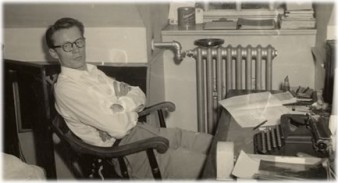
Robert Bly, Harvard dorms.
When the angel sees death appear he flies in slow circles, and with tears of ice and narcissi weaves the elegy we see trembling in the hands of Keats, Villasandino, Herrera, Bécquer, and Juan Ramón Jiménez. But how it horrifies the angel if he feels a spider, however tiny, on his tender rosy foot!
The duende, by contrast, won’t appear if he can’t see the possibility of death, if he doesn’t know he can haunt death’s house, if he’s not certain to shake those branches we all carry, that do not bring, can never bring, consolation.”
David Morley
In a society as tied to instrumental thinking as the U.S., it is not surprising that genuine darkness is relegated to the shadows (sic). In fact, taking the topic of death seriously is a guarantee of marginalization. There is plenty of fake darkness around, though. And I return to Bly’s poem that ends with ‘our own cities were the ones we wanted to bomb’. The ruling class, in this sense, are the gatekeepers of doubt. For doubt in any form, really, is quickly consigned to ‘conspiracy theory’ or the like. Politically and culturally the same mechanisms are in place. You must keep the lid on existential doubt of any kind. Just affirm. Agree. And the rule of consensus as practiced today in Western societies is highly pernicious. And audiences today are reluctant to explore their own feelings about anything. They look around first to see what others think. Oh and if an *other* is an institutional voice, all the more reassuring.
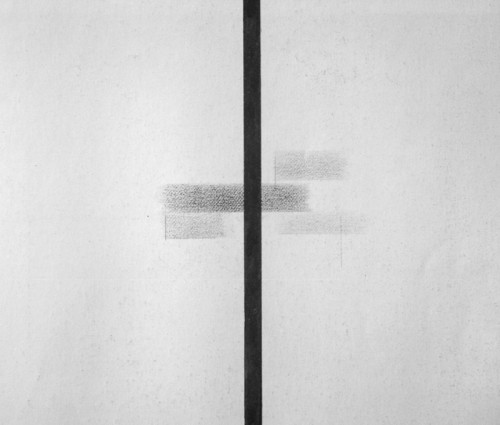
Josip Vanista
Burke notes that *credit* was one of the key features of Capitalist development. And credit begets indebtedness and that begets guilt. As he says “you are converting a religious psychology of retribution or penance into a commercial psychology of ambition”. And this is partly what I am getting at with regard to inherent allegorical constructions that are both material and purely psychic. The future is tainted by the guilt of indebtedness. Ambition and the future become wounded, somehow. And it is true, that ambition is never pure, and never free of feelings of fraudulence. Even the most ambitious harbors feelings of being found out. The future is mortgaged ahead of time. So for students, young, insecure, and with almost only the future as a point of orientation, the spectre of debt seems particularly insidious. And yet, of course, it is not as if debt itself were not allegorical. It is that such metaphoric thinking is discouraged. The system and its institutions work overtime to rationalize such things. Melville and Dostoyevsky are not what the system is looking for. It is looking for John Cheever or Harold Ramis. But ambition is also a product of the system that now constricts it. For ambition is the secularized mysticism of Medieval montastics. To reach for revelation is then reduced to a reach for appreciation. And it is in that kind of ambition that lurks the self knowledge of betrayal. No highly ambitious person is not aware of their own culpability in acts of selfishness.
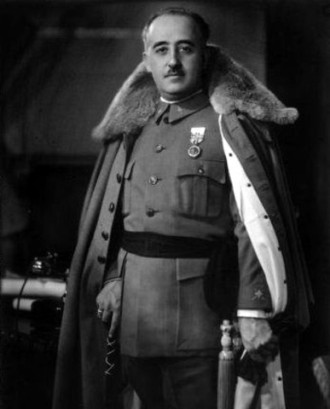
Franco
“A poem is What Is Going On, not a map of what is going on.”
Korzybski
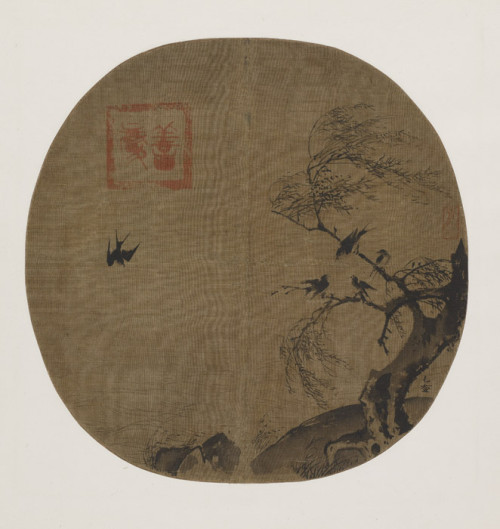
Mao Yi (active 1160 – 1175).
Lowell’s At the Indian Killer’s Grave…
“Death, the engraver, puts forward his bone foot
And Grace-with-wings and Time-on-wings compel
All this antique abandon of the disgraced
To face Jehovah’s buffets and his ends.”
This element of ambiguity cannot be separated from the uncanny; for the uncanny is partly a resemblance that suggests something forgotten, and yet familiar. And our reaction is ambiguous in that our feelings cannot arrive at certainty and end up placed in a new relation to our history and our formula for truth. Here is a fascinating new photo book, apropos of this.
https://www.theguardian.com/artanddesign/2016/jun/13/arne-svenson-portraits-victims-back-from-dead-unspeaking-likeness
Or those feelings are repressed as I believe today is the normal. And it was Empson who probably can stand as the first true modernist critic in the sense that he was already post modernist. He was the heir to Einstein and Heisenberg and Schrödinger, and was a math undergrad. He was concerned with relativity when he got to Cambridge, and with the idea of cosmic inter-connectedness. I know that in the writing of dialogue there is no greater mistake than clarity. No worse sound to an audience (with an ear) and no greater obstacle to actors. And this understanding of ambiguity was a given in the time of Shakespeare. And even through Keats and his notion of ‘negative capability’, much of what Empson was pointing out had been simply assumed by the Elizabethan dramatists, and certainly by many of the theatre of the Absurd writers and also by Joyce. Perhaps by all great writers. Empson though was approaching this as a student of quantum physics might.
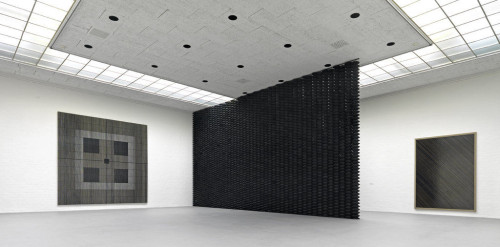
Gregor Hildebrandt (At the Wentrup Gallery).
“I have continually employed a method of analysis which jumps the gap between two ways of thinking; which produces a possible set of alternative meanings with some ingenuity, and then says it is grasped in the pre-consciousness of the reader by a native effort of mind.”
William Empson
And Empson is aware this is going to cause objection for in the next line he says so. And this is also why I tend to write this blog as one digression upon another. And when people complain about this, I am naturally suspect. One can say, well, Steppling is a fucking idiot. OK, but don’t rely on ‘oh, its so maddeningly unorganized’ or the like. And I find that reading a paragraph framed by, say, reproductions of Barnett Newman and Warhol tends to feel different in that inner most quadrant of the brain than reading a paragraph framed by photos of Ansel Adams and a painting by Norman Rockwell. But in what way are they different? Expand that idea to more far reaching contexts, and suddenly the entirety of what art and culture do is laid before us and that is, in fact, terrifying and miraculous both. And most importantly it goes toward dispelling a lot of vapid theory that has found traction in today’s marketplace of ideas. For reading Burke and Empson feels like a bolt of clarity compared to Ranciere, and I’m not really picking on him, but the point is, nowhere do I find the level of acute observation I find in Burke or even earlier, I.A. Richards or Leavis. Its apples and oranges in a sense, but …still. In 1951 Empson published his other masterpiece, The Structure of Complex Words. It was mostly ignored, and when not ignored was attacked. And the primary attack came from behaviorist psychology (and mostly in the form of Leonard Bloomfield). It is hard to imagine today that the crude thinking of behaviorism was all the fashion in the early 50s. And likely had the book been published a decade or so later the reception might well have been different. But it might also have been subdued. For already the social atmosphere of the University was changing and the culture at large was amplifying a highly instrumental and *scientific* sensibility. And by the 60s the pejorative *old fashioned* was the worst insult one could find to tar any theory or theorist.
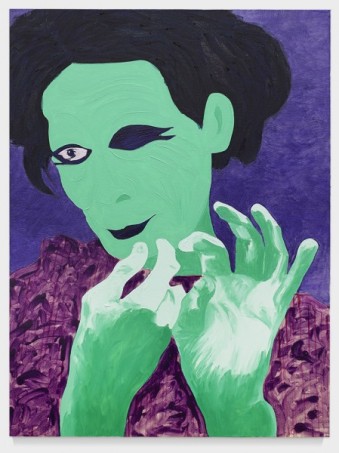
Thomas Lawson
The second book is a far more difficult read, as well. But that was rather the point. The book itself operates on a meta-level that Empson was well aware of, but refused to simplify.
“Roughly, the moral is that a developing society decides practical questions more by
the way it interprets words it thinks obvious and traditional than by its official
statements of current dogma.”
William Empson
Empson was rather astoundingly prescient in that one of the key themes of this book was to see the way in which manipulation of language is both conscious, and unconscious. But that political decisions were often the product of practical repetition, and historical amnesia. But also, there is the alchemy of speaking. That speaking often can supersede intention. Empson rejected the idea of a hard and fast distinction between a word’s meaning and a speaker’s meaning. Empson also believed that at a certain point in the history of a word, the history of its usage, the institutional authority — the political dimension — takes over and this has a ripple effect for the identity of those using that word.
Alan Durant and Colin MacCabe, in their exhaustive study of Empson’s debates with Raymond Williams and C.S.Lewis, write…
“…rather than talking of words and the meanings given to them by individuals, we need to think
of discourses and the practices that accompany them: practices which generally find their
existence and articulation in institutions.”
What is at stake, really, is a belief in a social unconscious.
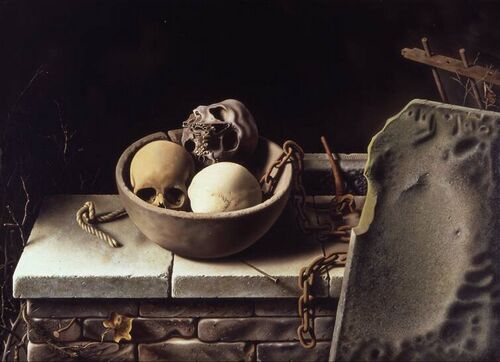
Raoul Hynckes
McCabe and Durant again….“The important point, however, is not that a speaker is consciously saying “A is B”. He or she
may not want to say A is B. What matters is that use of the word inevitably leads the speaker
to subscribe to the implication. In doing so, the speaker is defined as much as the word…”
This is a huge and complex topic and I want to write more about it in Part 2 of this posting. The relevance for this post is that the social unconscious, assuming there is one, and I think there is, is embedded in all institutional authority. And this has, of course, become much more pronounced today than in Shakespeare’s time. And I wonder if, in fact, that mass media and barrage of image and word hasn’t in fact taken on the role that once resided with speech writers and the like. In other words, that the machine of institutional power is on auto-pilot. And just my resorting to that term, borrowed from aviation technology, is implicated in a way in all this. The political discourse today is so caught up in group think — and especially on the side of white liberals who actually appear more prone to this reflexive acceptance of institutional prodding. It is as if the idea of a counter meaning to a set of phrases is experienced as traumatic. The trauma of disagreement with a system that has come to define (more narrowly than ever before) one’s sense of identity.
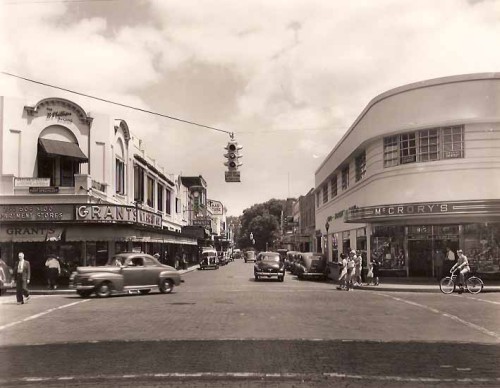
Orlando, 1930s. Downtown.
And I suspect there is a parallel mechanism in vision, and how people process space. To walk down a street, and see a figure ahead, means one is indexing a whole repository of meanings, or associations, and predictions. Some processing I am sure has come to resemble TV show cues. The walker’s intention, or goal, his direction, entails various, perhaps almost endless interruptions of logic and this becomes something very close to what Lacan sensed of the unconscious. So, the Empsonian complexity analysis applied to space becomes disturbingly Lancanian (Freudian) and hugely inescapable for any of us.
And this is why Lorca and Duende suddenly feels so necessary as a kind of corrective. For creative (sic) writers, those in MFA programs and the like, are finding what were once purely technical problems (for the likes of Lowell or Roethke or Wallace Stevens et al) are now problems of existential morality, and more, of political guilt.

John:
Speaking of artists in earlier times managing to survive on little money, what’s your take on the whole ‘day job’ meme? Of course, I’m sure you’ve worked ‘day jobs’ as have many other talented people, so that’s not the issue, but my problem is with this idea that the ‘day job’ is somehow inherently ennobling.
@ Remy,
I don’t think there is anything inherently ennobling about day jobs. I think that any great artist doing political work (and i mean the word “political” in the overtly political sense, but also the not so overtly political sense, for everything is, after all, political)–that such artists must know something about what it is to be human, what it is to struggle, what the world is like. Day jobs can be ennobling if the person working is thinking critically about the system they are working in/for, and if they look for ways of working against that system, or transforming that system rather than just accepting it even if such a system/workplace undermines their values or oppresses others (basically every institution and workplace in the West). Is it ennobling to have a day job? It is a necessity for most people. I just see so many people with day jobs who complain and then go home and watch TV all night and i just can’t see what’s ennobling about that. It is how you think about what you’re doing that could lead to some sort of behaviour that one could look at and respect.
On the flip side, if there’s an artist who gets paid for their work and has never worked a day job in their life, well, i don’t necessarily see a problem with that. Depends on the artist, the artwork, and the situation. Not easily to generalize that.
@ Steppling:
“A poem is What Is Going On, not a map of what is going on.”
Korzybski
I love this quote. It really reminds me of the situation i’m in right now with a project i’m doing on my university campus. People keep asking me “what does it mean?” But if i could tell them, then i wouldn’t have to do all this work. People seem to want a meaning or to know the “purpose” or the “end goal.” There is a consumerist mentality to this way of speaking. People want to “get it.” They want to obtain, consume, acquire the message or the knowledge. I tell them that the work lives in them, that I, myself, am trying to figure out what it about, and that is part of why I do it.
And no, the system is not looking for Melville or Dostoyevsky. But i have been using many, many quotes from Melville for my project (which is for the community across a mostly medicine-based university campus, not just academics in the humanities)–and people are responding very well to the Melville. Sure, people may not be thinking super deeply about this stuff, but imaginations and curiosity have been provoked. That’s a start. Imagination is something that the institution lacks. That is part of why we keep repeating the same mantras over and over again: consume, consume, consume; bomb, bomb, bomb… I think that if we take that quote above as having a very powerful kind of “truth” to it, then we can begin to see how poetry as a FORM itself can be inherently subversive.
A friend of mine tells me that money is freedom because you can do anything you want if you have enough money. Another example of a lack of imagination. If I can only do whatever I want if i have money, that is restricting possibilities quite a bit. Besides, i don’t believe that is what “freedom” is. I can’t imagine being free if my freedom depended on someone else’s oppression. I’m just not sure there is a way to have a large amount of monetary wealth without oppressing people. And, one might argue that every relationship involves some sort of continuum of oppression, but that is not really what i am talking about–that is a “sharing” and a Movement of working and resting. The oppression I am talking about is in stasis and is required to keep the rich, rich and capital flowing. As capitalists, our hands are dirty. Filthy. And I don’t think it has to be inevitable. But our infrastructure (especially in North America) simply relies on oppressing the people, people in third world countries, and the earth.
And on the subject of “soul” and Duende (though i’m not super familiar with this term)… I have my own ideas about that. I’m currently developing a thesis about poetry and spaces. I began by asking: do poems have a soul? Then, I thought that didn’t sound right and asked myself why. And my current “thesis” is that souls are not possessible–they are not property of one, nor can they be “owned;” in other words, a soul is not something that is “had.” A soul arises as something that is shared. A soul is shared. That is why our neoliberal, American Dream, pull-youself-up-by-the-bootstraps, consumerist society seems so soulless: people so often behave and act as though they are completely autonomous. But we are deeply interconnected with each other and the earth and history….the past. So much of our culture covers these connections up. So much time is spent in the virtual world in the affluent West that people forget how material the virtual world actually is. The massive, material infrastructure that exists in order to build all the hardware and harvest electricity from coal, damns, nuclear reactors… Like the drone warfare. It is easier to kill when it looks just a video game. And maybe this returns to Remy’s point about day jobs. There are a lot of “day jobs” that are very material and have the potential to remind the body of its connection to the land, to materials, and to a history of industry and labour. It is finding the form that allows us day-jobbers to make those connections and attempt to change that will be “ennobling” (though i’m not sure i’d use that word). Poetry can be subversive, but so can the act of remembering. Remembering a hidden past, remembering how to listen to the body, hearing the silenced voices speak–these are threatening to the system.
Now I have another question, and this may step on some people’s toes, although mind you, I’m just hypothesizing here. I just sometimes wonder if this idea that all art must be subversive and radical is not slightly simplistic since when taken to an extreme it values the artist’s intent over actual execution. Not to name drop, but when I look at a Monet painting, read Balzac, or watch a film by Renoir or Ophuls, the works don’t necessarily scream ‘radical’, but they still reveal certain truths about humanity and the world itself. Surely there’s room for both the Dionysian and Apollonian in all culture. I don’t know. Just a thought. This idea of ‘radicalism’ for its own sake has arguably led to Warhol, Koons et al. where only the conception matters. It’s just food for thought. Even if I’m still a fan of day Dostoevsky and Pasolini, perhaps what makes them great artists is far more complex than something that relates to the subversive intent of their work.
Just one more thing, your general premise about art of value being that which isn’t easily subsumed or assimilated by the master discourse is certainly well-taken in and of itself without condition. I just don’t necessarily think the Dionysian has a monopoly on subversive and/or transcendent art. That’s really all I’m getting at.
@ Remy,
Just because someone is not intending to be subversive or radical, does not necessarily mean that they are not these things. In fact, in our Western, instrumentalist, reason (sic) bound society, the most politically subversive thing one might do could be for an artist to “execute” the work without intent behind it. Whether the art is Dionysian or Apollonian is likely neither here nor there when it comes to how politically subversive, or “radical” the work is. But i think we are dealing here with two different nuances of the word “radical.” I mean is a Koons actually subversive or radical if his works only reenact the status quo? If a Monet makes you stop and contemplate “certain truths about humanity and the world” is that not, in fact, rather radical? I mean…do we see a lot of people contemplating these sorts of things today? Do people contemplate? Even the Apollonian, simple, or quiet work can speak so much in a culture dominated by competition, pollution, ads, popularity… I think you’re right, Remy, that what makes the great artists great IS something far more complex (or, perhaps, not just complex, but unspeakable…unsayable), not related to “subversive intent.” I am sure that some artists are well aware of the potential subversive effects of their art, while not doing it for those reasons (or wishing to call their work “subversive”)–but that might say more about the self awareness and critical awareness of the artist than their ability to create “great” art per se.
Subversive intent sounds like activism to me–which can be a great endeavor, but different. I do not think that it is fed by the same tributary. I would agree though that subversive *intent* is neither here nor there…and probably not anywhere (at least consciously).
Oh I basically agree with you calla and John as well for that matter, so perhaps my point really just comes down to semantics, since the concept of *radicalism seems to be something easily appropriated by large institutions, sort of like when a gallery refuses to display a certain work because it’s not relevant to what’s “going on” in the “art world”. But I know this has been discussed ad nauseam, so I won’t belabor the point.
Well Calla:
Perhaps my primary frustration is more personal and relates primarily to me and my aesthetic tastes. In other words, the problem may be more me, and not you or John. What I mean is that even if deep down I subscribe to the view of art and culture which primarily takes its cue from the Frankfurt School and especially Adorno that art should essentially be disruptive and resistant to co-option and that art is its own justification, there are certain works I personally appreciate that for one reason or another don’t seem to easily fit into this polemic or paradigm. Many of the Impressionist painters being a prominent example. Or a lot of 19th century English literature. Or even someone like Eric Rohmer vis-a-vis an Antonioni say. All I’m saying is I think there’s a lot of great art out there that doesn’t necessarily wear its subversiveness on its sleeve, but if one digs deep enough, they could still find elements in these works that would prevent them from being too easily assimilated or commodified. I fail to see a differience in co-optability or lack thereof between Degas/Monet and Kafka. And I bring up impressionists specifically, since John, you don’t seem to discuss them much. Just an observation.
@ Remy,
Perhaps if we didn’t live in a such a hyper-rationalist society, obsessed with organizing itemizing, and categorizing everything into qualitative data as though that were the only way of “understanding” the world, we wouldn’t be so concerned with *defining* what is and what is not art.
And, perhaps the effects of art are not sufficient to defining it. For instance, the feeling of uncanniness, or that one’s deepest being has been spoken to, or a glimpse of the sublime, a leap of emotion, a sense of connectedness to the world beyond the choices i make… I can be deeply moved and contemplative when stumbling upon an erratic crack in the pavement of an alleyway. I might even sense my own mortality, or the history of the earth in that one fissure, but it does not make the crack artwork. There are many hideous or banal paintings hung in hospital corridors (some of them impressionist copies) that hold my attention in a profound sort of way. Are they artwork if they speak to my unconscious and enter my daydreams unbidden? With some of these works, I doubt it; but still, they speak to me and i cannot deny there is something both beautiful and terrible in that. Maybe it is, in part, your sensibility, Remy, that expands your sense of aesthetic appreciation.
There is probably some philosopher or theorist who i haven’t read yet that says something similar to better effect, but those are just my personal surmises.
Thanks again- another step towards understanding the reconfiguration/disfiguration of the self and a lifeline for those of us even slightly cursed with reflection. Svenson’s photos are most unsettling.